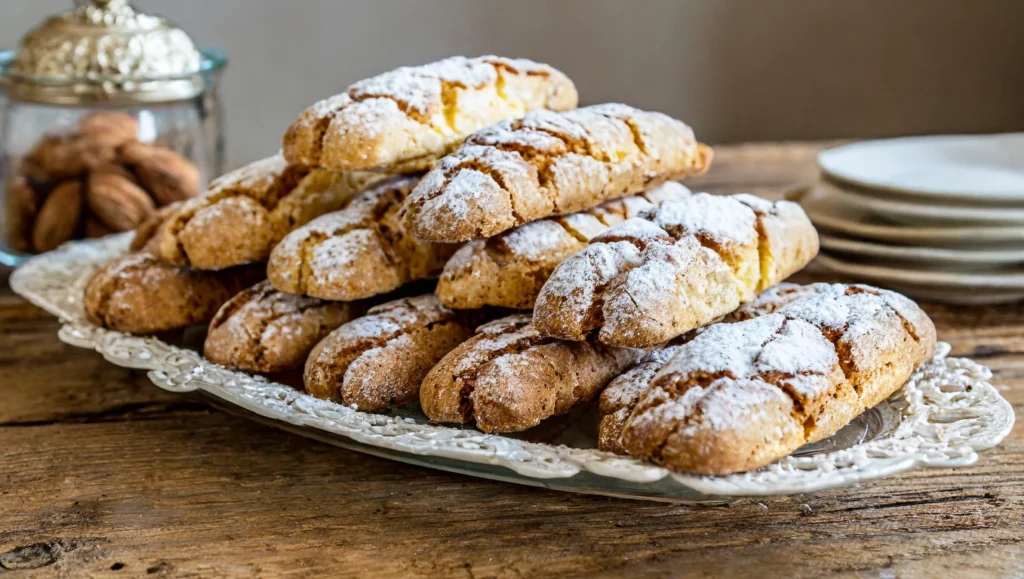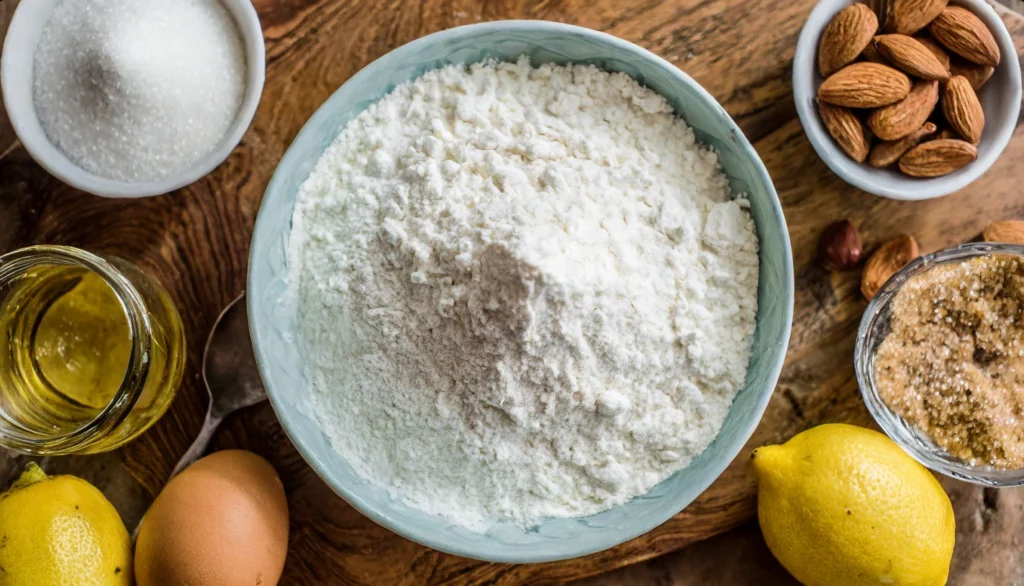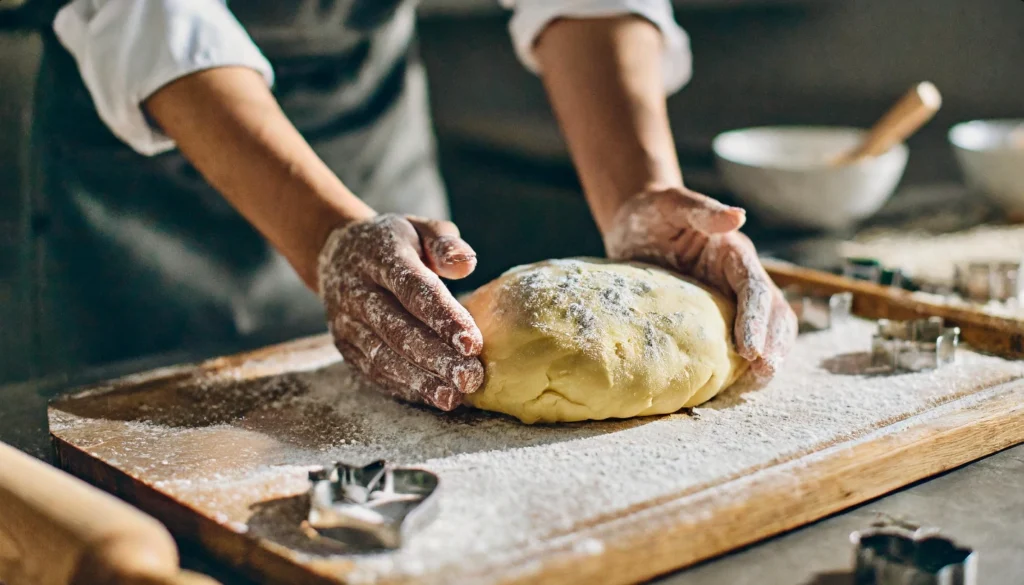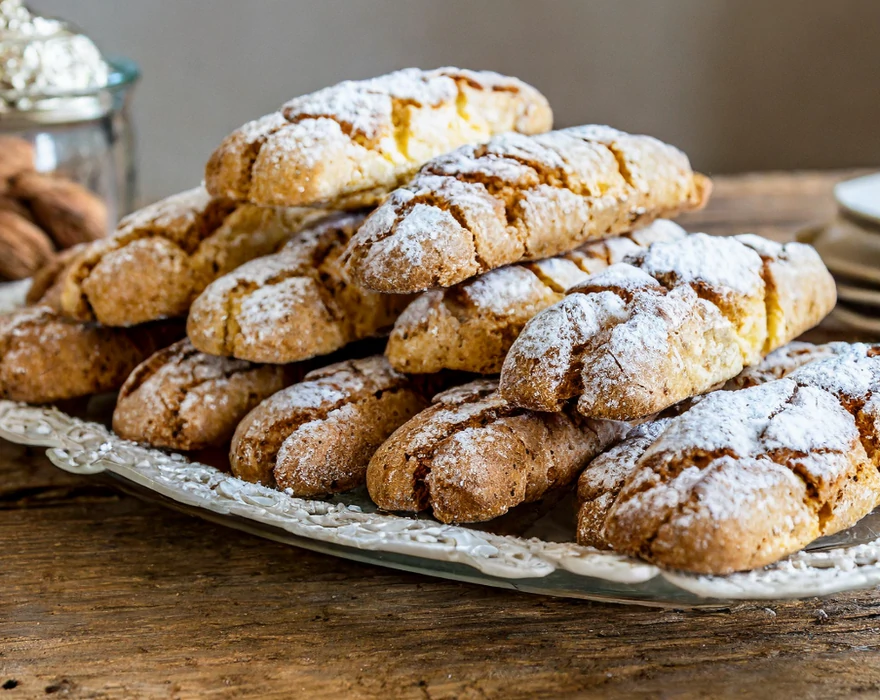
Introduction
Italian cookie recipes are more than just instructions for baking; they embody the essence of Italian culture and tradition. Passed down through generations, these recipes are a testament to the rich culinary heritage of Italy, where each cookie tells a story of festivals, family gatherings, and regional specialties.
History and Tradition of Italian Cookies
Italian cookies have a storied history that dates back centuries. Originating from various regions of Italy, each type of cookie has its own unique story, influenced by local ingredients and cultural traditions. From the almond-flavored Amaretti of Lombardy to the spiced pizzelle of Abruzzo, Italian cookies are a diverse and integral part of Italian cuisine. Discover more about Italian Culinary Traditions.
Essential Ingredients in Italian Cookie Baking

The secret to the delightful taste of Italian cookies lies in the simplicity and quality of the ingredients used. Common staples include:
- Flour: The base of many cookies, providing structure.
- Sugar: Sweetens the cookies, with variations including white, brown, and powdered sugar.
- Eggs: Bind the ingredients together and contribute to the cookies’ richness.
- Butter: Adds flavor and tender texture to the cookies.
- Flavorings: From vanilla and almond extracts to citrus zest and spices, flavorings add distinctive tastes to each recipe.
Step-by-Step Guide: Making Classic Italian Cookies

Creating classic Italian cookie recipes involves mastering a few basic techniques:
- Mixing the Dough: Start by creaming together butter and sugar, then gradually add eggs and flavorings, mixing until smooth. Gradually incorporate the dry ingredients to form the dough.
- Shaping: Depending on the recipe, the dough can be rolled into balls, shaped into logs, or pressed through a cookie press to create various shapes.
- Baking: Bake at the recommended temperature until the cookies are lightly golden and set, ensuring not to overbake to maintain their signature tender texture.
Incorporating these simple steps can lead to delicious outcomes in your baking adventures. For more insights into baking techniques, visit Epicurious’ Guide to Italian Baking.
Popular Italian Cookie Recipes
The diversity of Italian cookie recipes reflects the rich tapestry of Italy’s regional cultures and histories. Some of the most beloved varieties include:
- Amaretti: Almond-flavored cookies that are crispy on the outside and chewy inside, originating from Lombardy.
- Biscotti: Twice-baked cookies from Tuscany, perfect for dipping in coffee or Vin Santo, an Italian dessert wine.
- Pizzelle: Traditional waffle cookies made with a special iron, flavored with anise, and popular in Abruzzo.
Each recipe offers a unique taste experience, rooted in the traditions from which they come.
Decorating and Customizing Italian Cookies
Decorating and customizing these cookies not only enhances their appearance but also adds a personal touch that can make baking even more rewarding. Techniques and ideas include:
- Icing and Glazes: A simple icing or glaze can dress up cookies for special occasions.
- Chocolate Dipping: Dipping cookies in melted chocolate and then into nuts or sprinkles adds both flavor and texture.
- Custom Flavors: Experiment with adding different extracts, citrus zests, or spices to the dough to create new flavors.
Pairing Italian Cookies with Beverages
The enjoyment of Italian cookie recipes extends beyond the baking process into how they are served. Pairing cookies with the right beverage can elevate the tasting experience. Consider these traditional and experimental pairings:
- Espresso or Coffee: The robust flavors of coffee complement the sweetness of cookies, making for a perfect breakfast or after-dinner treat.
- Italian Dessert Wines: Sweet wines like Vin Santo or Moscato pair beautifully with biscotti and other cookies.
- Tea: Lighter cookies pair well with aromatic teas, offering a refined refreshment option.
Explore more about Enhancing Dining with Wine Pairings.
FAQs on Italian Cookie Recipes
To round off this guide, here are answers to some frequently asked questions about making Italian cookie recipes:
- What are the most popular Italian cookie recipes?
- Amaretti, biscotti, and pizzelle are among the most popular, loved for their unique flavors and textures.
- How do you store Italian cookies to keep them fresh?
- Most cookies can be stored in an airtight container at room temperature for several days. For longer storage, freezing is an option.
- Can Italian cookie recipes be made gluten-free?
- Yes, by substituting gluten-free flour blends for regular flour, most recipes can be adapted for gluten-free needs.
- What’s the secret to making soft and chewy Italian cookies?
- The secret often lies in the baking time; removing cookies from the oven just before they seem done allows them to firm up without becoming hard.
Conclusion
In wrapping up our journey through the sweet and inviting world of Italian cookie recipes, we’ve ventured beyond mere ingredients and techniques to touch the very essence of Italian culture itself. These recipes are more than just a treat; they are a celebration of traditions that have been lovingly passed down through generations. As we savor each bite of these delightful cookies, let’s not forget to explore the broader spectrum of Italian cuisine that shapes these baking traditions. From the hearty and rustic flavors of a “Butter Crust Pizza” to the delicate craftsmanship of “00 Flour Pizza Dough”, Italian cooking offers a world of flavors waiting to be discovered. Let these recipes inspire you to delve deeper into Italian cuisine, exploring its rich flavors and bringing a piece of Italy into your kitchen with every dish you create.

Easy Italian Cookie Recipes for Every Baker
Ingredients
- All-purpose Flour: 2 1/2 cups 300 grams
- Granulated Sugar: 1 cup 200 grams
- Unsalted Butter: 1 cup 226 grams or 2 sticks, at room temperature
- Eggs: 2 large
- Vanilla Extract: 1 teaspoon 5 ml
- Almond Extract optional: 1/2 teaspoon (2.5 ml)
- Baking Powder: 1 1/2 teaspoons 7.5 grams
- Salt: 1/4 teaspoon 1.5 grams
- Zest of 1 Lemon optional for flavor: Approximately 1 tablespoon (6 grams)
- Powdered Sugar for dusting, optional: 1/4 cup (30 grams)
Instructions
Step 1: Gather Ingredients
- Compile all necessary ingredients according to the specific Italian cookie recipe you are following. Common ingredients include flour, sugar, eggs, butter, and flavorings like vanilla extract, almond extract, or citrus zest.
Step 2: Prepare Baking Equipment
- Preheat your oven to the temperature specified in your recipe, usually between 325°F (165°C) to 375°F (190°C).
- Line baking sheets with parchment paper or lightly grease them to prevent sticking.
Step 3: Mix Dry Ingredients
- In a medium bowl, whisk together the flour, baking powder (if used), and any spices or flavorings specific to your recipe. This ensures these ingredients are evenly distributed before mixing with wet components.
Step 4: Cream Butter and Sugar
- In a large mixing bowl, use an electric mixer to cream together the butter and sugar until the mixture is light and fluffy. This process incorporates air into the batter, contributing to a lighter cookie texture.
Step 5: Add Eggs and Flavorings
- Beat in the eggs one at a time, ensuring each is fully incorporated before adding the next. Then, mix in any additional flavorings such as extracts or zest.
Step 6: Combine Wet and Dry Ingredients
- Gradually add the dry ingredients to the wet mixture, mixing until just combined. Avoid overmixing to prevent the cookies from becoming tough.
Step 7: Shape the Cookies
- Depending on the recipe, shape the dough into balls, logs, or use a cookie press to form shapes. For some recipes, you may need to chill the dough before shaping.
Step 8: Bake
- Place the shaped cookies on prepared baking sheets, spacing them appropriately as specified in your recipe.
- Bake in the preheated oven for the time directed in the recipe, or until the cookies are lightly golden and set. Baking times will vary based on the cookie type and oven.
Step 9: Cool
- Allow the cookies to cool on the baking sheet for a few minutes before transferring them to a wire rack to cool completely. This helps to set their structure.
Step 10: Decorate (Optional)
- Once cooled, you can decorate the cookies with icing, melted chocolate, sprinkles, or powdered sugar, depending on the recipe or personal preference.
